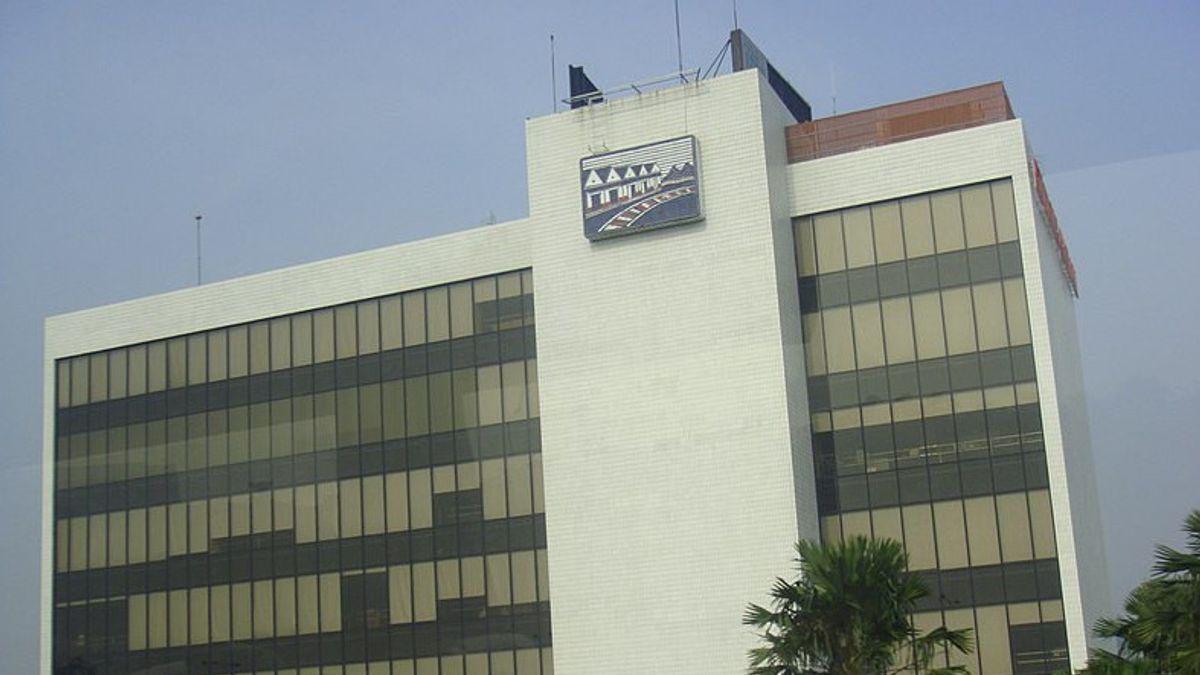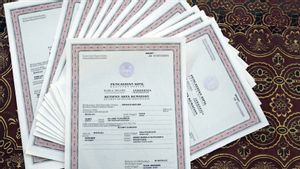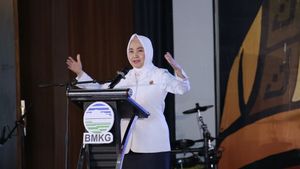JAKARTA - The tradition of smoking kretek cigarettes has been favored by the Bumiputras for a long time. The tobacco industry benefits. Whoever has the recipe for the best kretek – cloves to sauce – mixture, will surely be rich. Tjoa Ing Hwie or Surya Wonowidjoyo agrees. Kretek is the 'ninja' way to get rich. In his hands, Gudang Garam cigarette company was born. His business was a great success. However, Gudang Garam had fallen due to a shortage of workers due to the G30S.
Cigarettes are an industry that has survived the Dutch East Indies era. Every time there is an economic shock or war, cigarettes do not lose their fans. In fact, it increased. Moreover, the cigarette industry was often the savior of the economy in the Dutch East Indies.
The resilience of the cigarette industry has made various domestic entrepreneurs take part. Surya Wonowidjoyo is one of them. The immigrant from China's Fujian province who lives in Kediri has learned a lot from his family who introduced cigarettes as a hereditary industry.
Every family member is required to be involved from the upstream to downstream processes of the cigarette industry. So is the sun. When he was young he had little choice but to join his uncle, Tjoa Kok Tjiang.
Surya was asked by his uncle to help him grow the Cap 93 cigarette company. At that time, Cap 93 cigarettes were on the rise and were prominent in Kediri. Surya was given the responsibility of heading the sauce mixing department.

Surya did not waste this opportunity. Every day, Matahari focuses on producing the best kretek cigarettes. Especially with his uncle's stock of sauce ingredients. Surya's ability also increased. Cap 93 cigarettes are becoming popular. But in the middle of the road, the two clashed until Surya chose to leave Cigarettes Cap 93.
“Tjoa Kok Tjiang, in the 1950s, was arguably one of the leading kretek producers in Kediri. Sales progress began to be felt, after Tjoa Ing Hwie, in about 1950 entered there, and was then entrusted to head the sauce mixing department. It was also there that Ing Hwie learned Kok Tjiang's hidden knowledge in producing kretek which could twist the tongues of the smokers. For reasons that are not clear, Ing Hwie, who has been trusted to be the director's proxy, has a fight with Kok Tiiang."
“According to one story, the uncle did not agree with his nephew's proposal to expand. Meanwhile, another story states, the fight occurred because the nephew started demanding a share of the shares. Finally, in 1956, Ing Hwie left his uncle's company. He was unemployed for a year, before finally deciding to set up his own cigarette company from the savings he had left over during his six years working at Cap 93,” said Eddy Herwanto Bahan and Muchlis Dj. Tolomundu in his article in Tempo Magazine entitled Cigarettes: The Bankrupt and the Risen (1985).
He founded a cigarette company under the Ighwie brand. In order to accommodate the cigarette company, he accepted 50 workers who left with him from Cap 93 to work for his cigarette company. However, the brand was less successful in the market. Surya tries to rack his brain and start from scratch building a cigarette change with a new brand.
He then changed his cigarette trademark to Cap Gudang Garam in 1958. The change was because Surya got the idea of Gudang Garam from a dream. He saw the Gudang Garam building opposite the Cap 93 factory. The dream then haunted him for days.
“One night Tjoa Ing Hwie had a dream about an old salt warehouse. Opposite the warehouse stands the Cap 93 factory which looks classy. Tjoa Ing Hwie also told about his dream to Sarman, a loyal employee. Sarman also tried to translate the dream of the 'master' into an illustration image. Starting from that, Sarman suggested to Tjoa Ing Hwie to set the image to be a logo for cigarette products, with the trademark Gudang Garam," wrote Baskoro Suryo Banindro in the book Kapita Selekta (2019).
Lowest pointThe name Gudang Garam actually brings joy to Surya. Cigarette factory Cap Gudang Garam with a product that is also given the same name, is selling well in the market. This success reached its peak in 1962. The emergence of a kretek cigarette product with the name Gudang Garam Kuning became his inspiration.
This success was even able to boost Gudang Garam's production, which was originally 234 million sticks, to 779 million cigarettes in a year. At that moment Gudang Garam began to transform like a giant ship. Sales increased, so did the number of workers. Many family heads in Kediri who become laborers are very dependent on the presence of Gudang Garam.

However, its existence was interrupted. Gudang Garam received a severe trial due to the political events of the September 30th Movement (G30S) in 1965. The G30S incident began with the kidnapping and murder of a number of army generals by military forces. Although the trigger, the mastermind, who was involved are still a mystery, the tone of the involvement of the Indonesian Communist Party (PKI) has emerged as the most heard.
The government took immediate action. They moved to crush all of the PKI's stooges from the roots. Workers who were predicted to be the fifth generation of the PKI became victims. Including Gudang Garam workers. The owner of Gudang Garam gave full support to the operation to crush the G30S minions. Because Gudang Garam got into a lot of trouble because of the actions of the PKI workers' unions.
“Even in Kediri, when viewed from the perspective of NU, the early days of the New Order were considered a time for Islamization. The senior kiai from the Lirboyo Islamic boarding school, Kiai Haji Mahrus Aly, is already in contact with the Gudang Garam cigarette company, which during the Guided Democracy period faced a lot of difficulties due to the actions of the PKI unions.”
“According to Mahrus Aly's son, Kiai Imam, Mahrus Aly also has a close relationship with the Brawijaya Military Command from the army and is a senior confidant of the local police. In 1966, Gudang Garam asked for his help in getting rid of the PKI and, with his instructions, Ansor played the role discussed in the previous chapter. After that, Gudang Garam's business grew rapidly and its alliance with the kiai in Kediri remained strong," explained MC Ricklefs in the book Islamizing Java (2013).
That action ended up being the master's weapon. As a result of the operation, workers who were considered to be affiliated with the PKI were removed. Gudang Garam became the cigarette company with the most losses. Turnover decreased sharply. So is the production. It took Gudang Garam two years to get things back on track. In other words, Gudang Garam reached its lowest point at that time.
“In 1965, along with the political events of the G30S PKI, the Gudang Garam company experienced a shock because many of its cigarette factory workers were arrested by the military because they were suspected of being members of the PKI. However, two years later, the company was able to rise and consolidate the company's management so that Gudang Garam was able to expand its market by entering the Blitar, Madiun and Surakarta areas," concluded Bedjo Riyanto in his book Packing Tips (2019).
*Read other information about HISTORY or read other interesting articles from Detha Arya Tifada.
Other BERNASThe English, Chinese, Japanese, Arabic, and French versions are automatically generated by the AI. So there may still be inaccuracies in translating, please always see Indonesian as our main language. (system supported by DigitalSiber.id)












